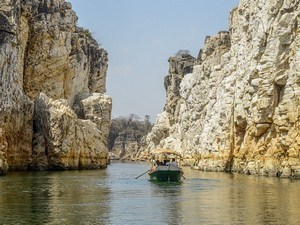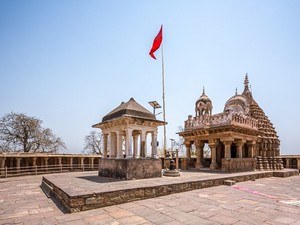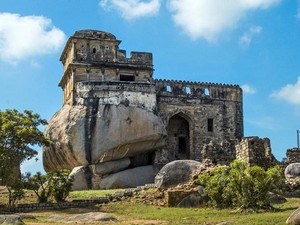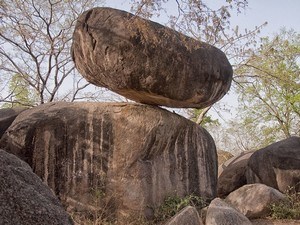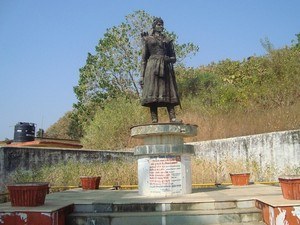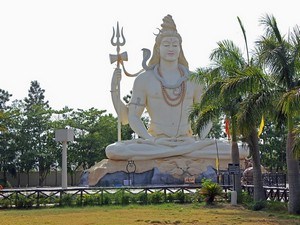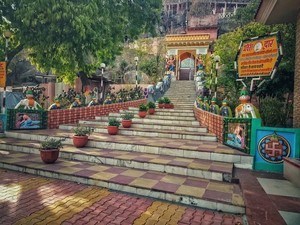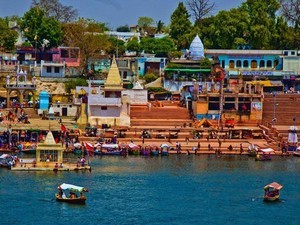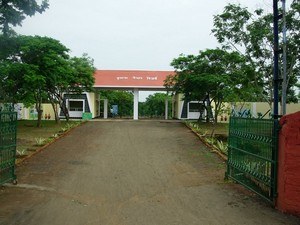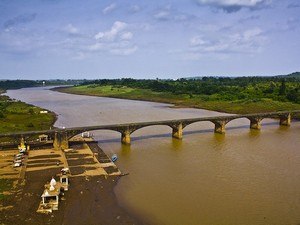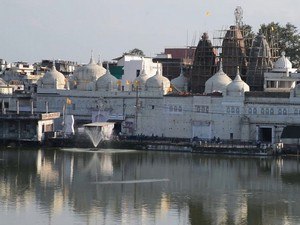Rani Durgavati Museum, Jabalpur - Timings, Entry Fee, History & Artifacts
 #6 of 18 Places to Visit in Jabalpur
#6 of 18 Places to Visit in Jabalpur
 Distance (From Jabalpur Junction): 2 Kms
Distance (From Jabalpur Junction): 2 Kms
 Trip Duration (Including Travel): 1 Hour
Trip Duration (Including Travel): 1 Hour
 Place Location: Near Bhawartal Garden
Place Location: Near Bhawartal Garden
 Transportation Options: Bus / Cab / Auto
Transportation Options: Bus / Cab / Auto
 Travel Tips: None
Travel Tips: None
At a distance of 2 km from Jabalpur Junction, Rani Durgavati Museum is a museum located in Jabalpur, Madhya Pradesh. Situated near Bhawartal Garden, it is one of the famous places of sightseeing in Jabalpur.
Rani Durgavati Museum was established in 1976 in memory of the valiant Gond queen Rani Durgavati, who sacrificed her life fighting for her mother land. The museum houses a beautiful collection of ancient coins, prehistoric relics, and copper and stone inscriptions. From detailed photographs of Mahatma Gandhi to fine sculptures from Chausath Yogini Temple, one can get to see a plethora of things in this museum. If you are an art lover, a visit to this museum must be on your list of the things to do in Jabalpur.
The building of the Durgavati museum is double-storeyed and eye-catching. There are several galleries in the museum namely Shaiva gallery, Vaishnava gallery, Jaina Gallery, Index Gallery, Excavation gallery, Inscription gallery, Coin gallery, and Tribal art gallery. There is a total of 6163 antiquities in the museum. The entrance hall of the museum is Index Gallery having a reception counter at one corner and a departmental publication counter at another corner. A sculpture of Rani Durgawati riding on an elephant is displayed in middle, and paintings depicting the life of Durgavati are also displayed on the wall. The stone sculptures procured from Tevar are displayed here which include Dhyani Buddha, Bodhisattva, Sthanak Buddha, Bodhisattva Padmapani, Buddhist deity Tara, etc.
The Saiva Gallery house an outstanding sculpture of the eight-armed dancing Ganesha. Lord Siva touches his fingure to Parvati's mouth expressing love and affection, Ardhanariswara form, Hari-Hara sculptures of Siva and Vishnu, Bhairava, Shakti-Ganesha and Parvati are some of the noteworthy sculptures in this gallery. These sculptures are datable to the Kalachuri period (9th-12th century). The sculpture of Vishnu and his incarnations are displayed in Vaishnava Gallery. The sampada sculpture of Vishnu found from Barhata, district Narsimhpur is a remarkable figure of the gallery. There are three other Sampada standing sculptures of Vishnu procured from Mankedhi and Jabalpur. One can see the sculptures of Jain Tirthankaras in the Jaina Gallery which were collected from the Jaina art centers of Jabalpur.
The Apsara (Naikas) and Dikpal Gallery is located on the first floor of the museum. This gallery is housed with the figures of Sura-Sundari, Skhalit-Vasna, Naika Sadyasnata, Veena-Vadini, etc. All these sculptures contain the elements of Kalchuri art traditions such as ornamentation, beautiful hair styles, well proportionate body. Among the Dikpalas here are Indra, Agni, Varuna, Kubera, Yama. Besides, one can see the sculptures of Buddhist deity Tara, Kalyani Devi and panel showing war scenes.
The socio-economic culture of the Gond and Bega tribes is showcased through models, pictures, and objects in the Tribal Art Gallery. The first floor contains letters written by Mahatma Gandhi and also original photographs of him and other freedom fighters. A collection of rare inscriptions from the 5th to 12th century AD are displayed in the Inscription Gallery of the museum. The pictures of Yoginis, the temple of Gauri, and a rare collection of coins ranging from 2nd BC to 1600 BC keep you glued to the place. There are stone sculptures displayed in the museum premises and garden.
Timings: 10 AM - 5 PM, Closed on Mondays & Govt. holidays
Entry: Rs. 10 for Indians & Rs. 100 for Foreigners





